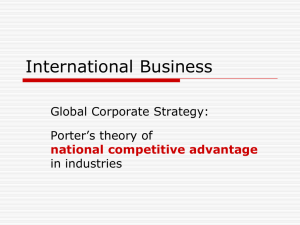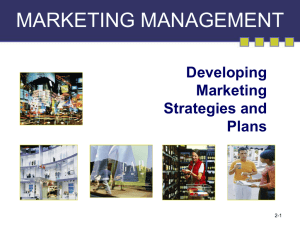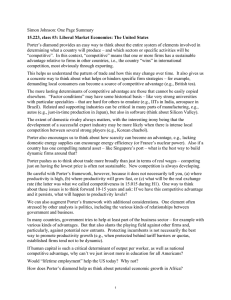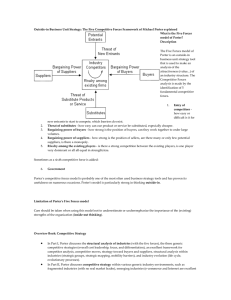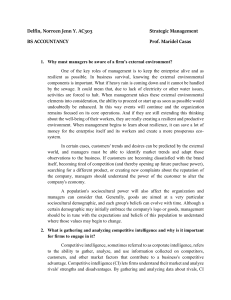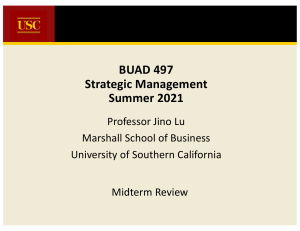COMPETITIVE ADVANTAGE
advertisement
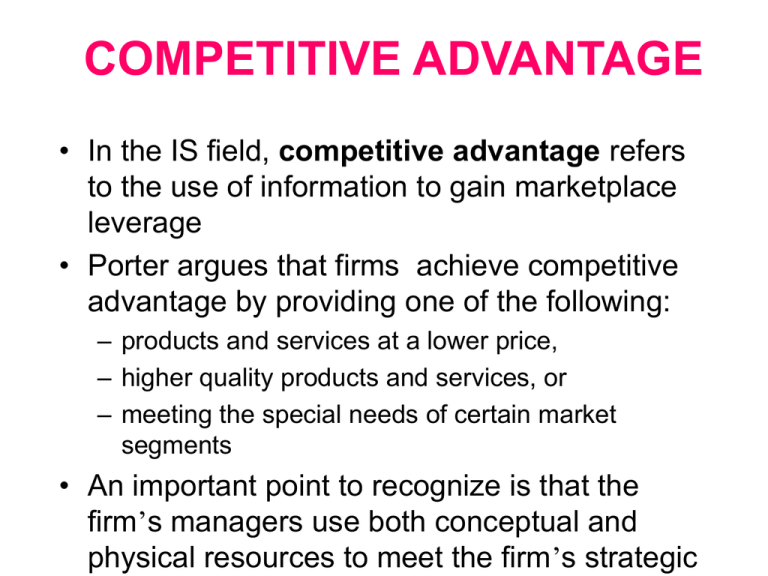
COMPETITIVE ADVANTAGE • In the IS field, competitive advantage refers to the use of information to gain marketplace leverage • Porter argues that firms achieve competitive advantage by providing one of the following: – products and services at a lower price, – higher quality products and services, or – meeting the special needs of certain market segments • An important point to recognize is that the firm’s managers use both conceptual and physical resources to meet the firm’s strategic Porter’s Value Chains • Porter argued that firm’s opportunities to create competitive advantage occur at different steps in the value chain (Figure 2.3) • The Margin is the value of the firm’s products and services less their costs, as perceived by the firm’s customers • The value chain is made of the primary and support activities that contribute to a firm’s margin value. Increasing that marginal value is the objective of the chain model • Firms can create value by performing activities, which Porter calls value activities Expanding the Scope of the Value Chain (Figure 2.4) • Additional advantages that can be achieved by linking the firm’s value chain to those of other organizations creating an inter-organizational system (IOS) • The participating firms (business partners) work as a coordinated unit, creating a synergy that cannot be achieved by working alone • Porter termed this the value system


![[5] James William Porter The third member of the Kentucky trio was](http://s3.studylib.net/store/data/007720435_2-b7ae8b469a9e5e8e28988eb9f13b60e3-300x300.png)
